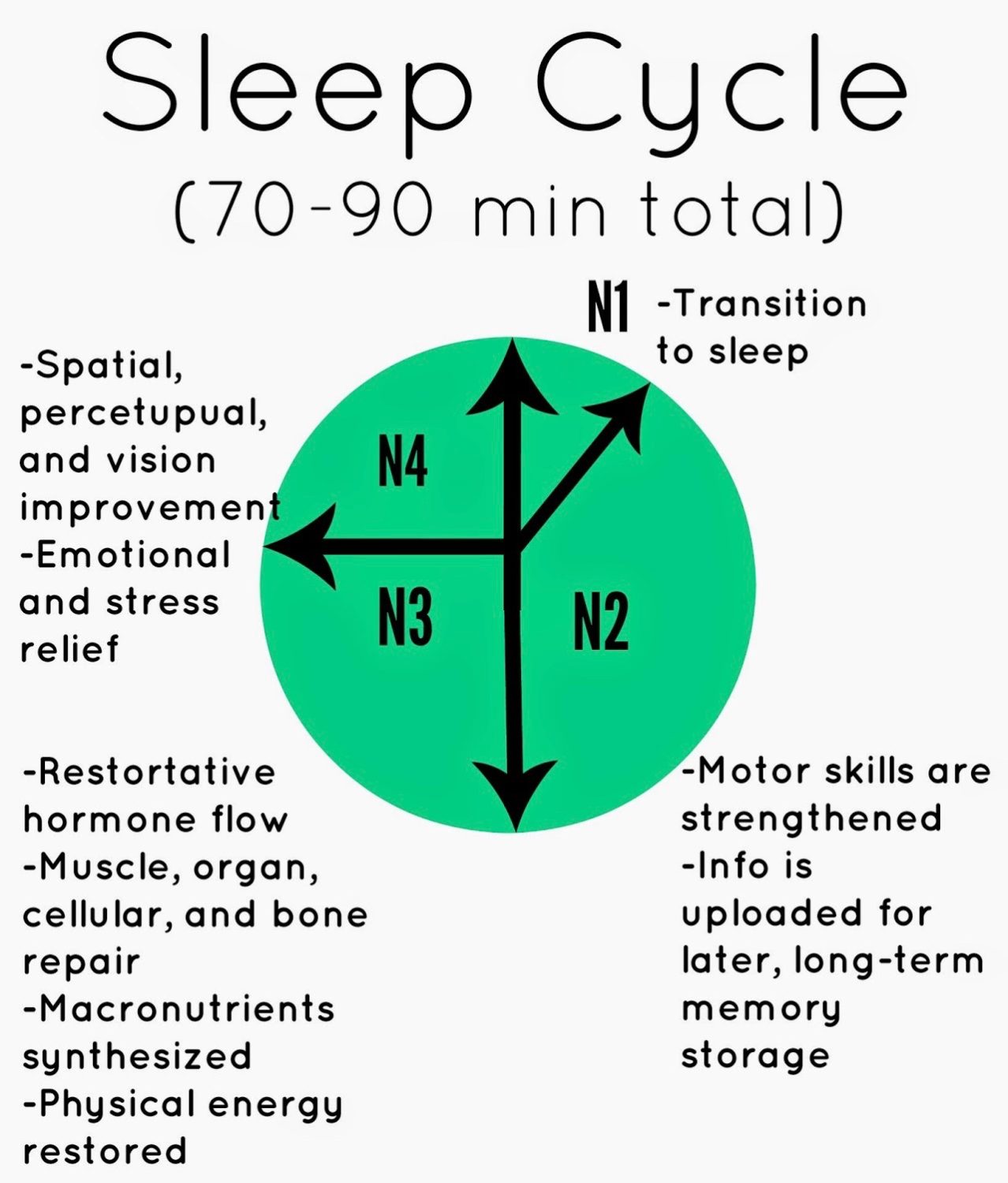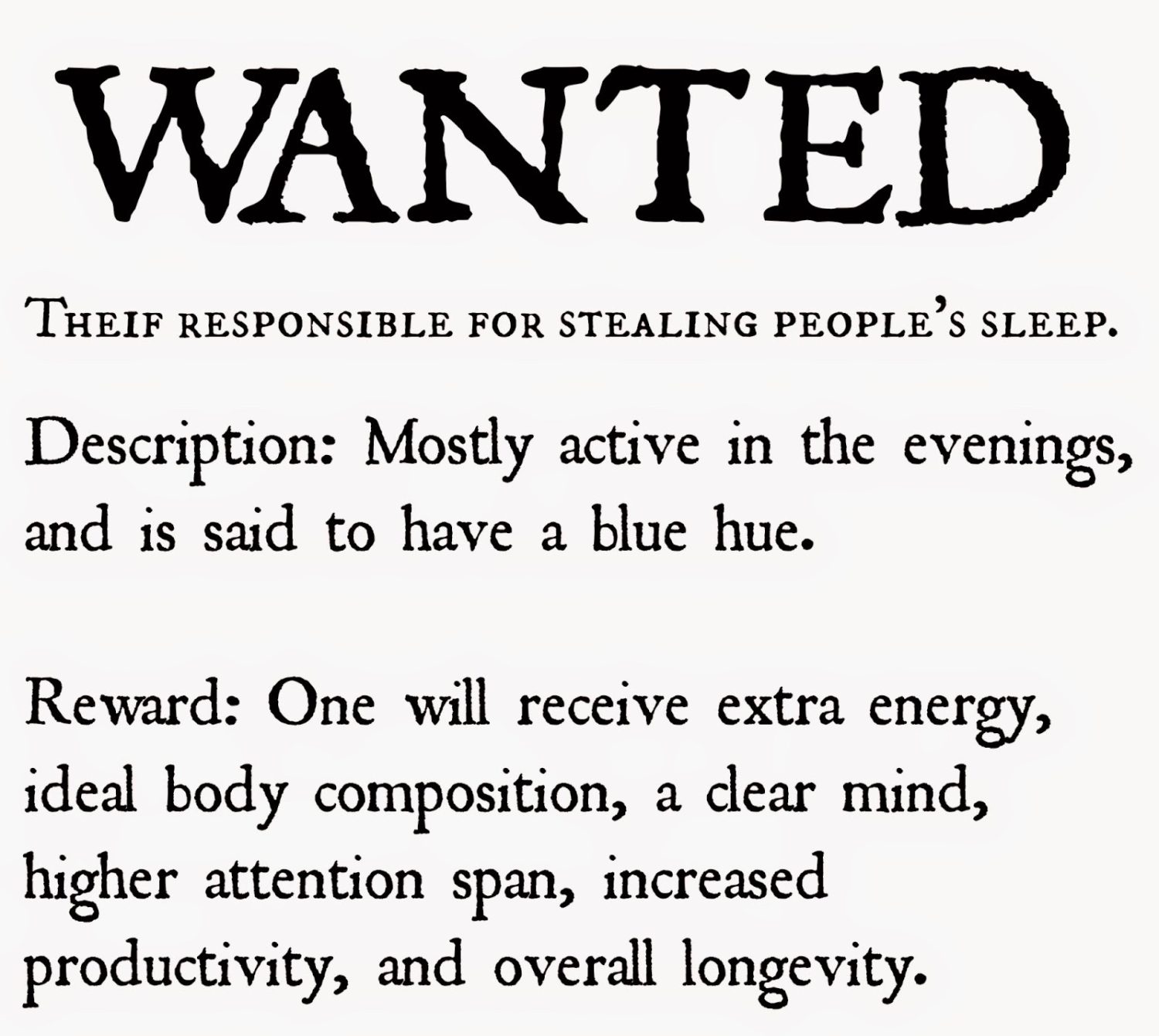
The science behind sleep remains a mystery to most individuals, it’s common knowledge that everyone has their own ideal bed environment to enable them to get a good sleep. However, as sleep disorders, stress, sickness, disease, and overall health of the human race declines, the importance of learning about this nightly activity is rising. Therefore, today I have decided to discuss the various information that I learned through completing Mark Sisson’s Primal Blueprint Certification course. Throughout the certification, I was taught why it is so important to get adequate amounts of sleep, what a “good nights rest” actually means, and the varying factors that can effect the overall productivity of sleeping as a whole.
Why Sleep is a Big Deal
While the body is asleep, many adaptive and growth hormones (such as testosterone), become active rebuilding the organs, muscles, and overall well being of one’s body, causing it to feel rejuvenated in the morning. Not only that, but specific white blood cells begin killing off any unwanted bacteria, while macrophages and leukocytes also kick into high gear, making sure that the “good” flora stay healthy as well. Through the activation of human growth hormone (i.e. HGH), fat is burned, while certain parts of the brain responsible for emotional and social health are also rested. That being said, when the body is in a state of chronic sleep deficit, appetite, metabolism, and storage of carbohydrates, are significantly altered. This causes one’s overall mood, ability to focus, be productive, and retention of key information to be compromised, while internal factors, such as blood pressure, heart rate, and stress hormone levels, all skyrocket, simultaneously weakening the immune system, and thus leading to heart disease, cancers, sexual dysfunction, premature aging, and weight gain.

So, what exactly happens when you close your eyes and go to sleep on the Best Sleep Number Alternative, or similar mattress, on your bed? For starters, the brain is quite active, responding to differing, internal stimuli, simultaneously phasing into the four stages of sleep; N1 (first, five minute transition into sleep), N2 (10-15 minutes), N3 (deepest sleep stage with restorative and adaptive hormones flowing, repairing cells and muscles), and REM (i.e. “dream sleep” – 20% of sleep cycle, paralyzation of legs and arms, improvement of spatial, perceptual, and visual skills). It is in the second stage of sleep (i.e. N2), that one’s heart rate and body temperature decreases, while eye movement completely stops. Information is “uploaded” for further storage during later REM sleep, while learning and motor skills are strengthened. This process is known as “long-term potentiation,” and becomes critical as one’s learning increases with age. Next, one’s body phases into the third, deepest stage of sleep, known as N3. This is where blood is directed away from the brain towards the muscles, organs, and bones, where it is able to restore physical energy through restorative, adaptive hormones, and macronutrient synthesis. This can also be called “non-REM” sleep, and usually happens for 70-90 minutes into one’s sleep cycle. Last but not least, REM sleep arrives, which is named for the rapid eye movement that occurs. As mentioned previously, one’s legs and arms are put into paralyzation mode, while heart and blood pressure raise, and breathing becomes shallow. Emotional experiences from the day prior are sorted out, while perceptual visual, spatial, memory, and cognitive skills are improved, as well as the production of important neurotransmitters; dopamine and serotonin. Overall, the body repeats through these 4, non-REM and REM stages of sleep during night, taking a total of 90 minutes to go through once. This process as a whole is known as “synaptic homeostasis,” and is where the body refreshes the spaces between its nerve cells (i.e. synapses). The more stimulation one experiences during the day time, the more the bodies cell communicators grow. Therefore, it is undoubtedly critical to get the uninterrupted sleep that successfully goes throughout non-REM and REM cycles, to ensure that these synapses are restored.

Despite those who are able to fall asleep in any atmosphere, even the smallest amount of light exposure can hinder the beneficial, hormonal effects of sleeping, causing overall restoration to be suppressed. Though wearing sleep masks can be helpful and relaxing for one’s eyes, it is actually the entire body that is sensitive to light. Studies have shown that even the smallest amount of exposure when one is supposed to and (or) is fast asleep, disrupts the internal biological, rejuvenating processes. One study, showed that the simple act of flashing a beam of light across the back of one’s knee while sleeping, noticeably disrupted their melatonin release. Another study preformed 2-3 hours after one’s bedtime, using 2 millisecond of light every 30 minutes, for an hour straight, proved that the light, though inconceivable to the naked eye, did penetrate the eyelids and thus disrupted melatonin secretion. Overall, these studies show why it is incredibly important to sleep in a dark room, as our bodies “night-shift” was made to work best in these conditions
Food Induced Coma
While it is easy, and rather fulfilling to one’s “comfort food” preferences, to buy into the statement that eating high carb meals helps one sleep, this saying is actually very misleading. Because of the surge of insulin that carbohydrates naturally produce in the body, having a meal that is high in this component can significantly alter the quality of sleep, regardless of if one takes notice of it or not. Instead of the body focusing on rejuvenating muscles, organs, and tissue, it is busy trying to digest the food and put it to proper use. For this reason, it is good idea to eat heavier meals earlier on in the day, as a light meal at night allows the body to focus on the nightly routine of restoring itself. Drinking alcohol near the hours of bedtime can also significantly reduce the quality of one’s sleep, due to interference with hormone flow. Therefore, while certain foods rich in L-Tryptophan (i.e. nuts, eggs, cheese, and meat) may aid in the release of melatonin, intake of these foods around bedtime is rather minuscule compared to the other components that may alter one’s sleep quality.

Is Napping Necessary?
As one gets older, the tendency to take afternoon naps tends to arise. However, napping should not be ignored in those of younger ages, as it can be a necessary component of getting the much needed “battery charge” one’s body needs. Though having a synched circadian rhythm may take away the need for a nap, they can be incredibly helpful to those with a disrupted sleep cycle. Due to the internal rejuvenation that goes on during sleep not being fulfilled, taking short naps are efficient ways to easily catch up on the much needed non-REM and REM sleep. If one is feeling sleep pressure (i.e. the desire to take a nap), 20-30 minutes is quite enough to restore one’s worn out nervous system through balancing the brain’s sodium:potassium ratio. In order to catch up on REM sleep, taking earlier hour naps, such as those in the morning, are the most effective to target this specific sleep phase, and help one feel energized for the rest of the day. However, if one naps in the afternoon, the body focuses on the processes that are lacking from overall, deep sleep deficiency, making them feel groggy and seemingly more tired once waking. Yet this will only last for a few minutes, after which brain function and adaptive hormones will begin working at peak levels. Overall, if one feels the urge to nap in order to focus properly, they are most likely right. It is also key to note that there is no need to worry about later, regular sleep times being compromised by taking morning or afternoon naps, as these can actually combat any insomnia, due to one’s circadian rhythm being back on track.
Sleep Summary
Related Reading: